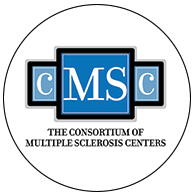Patients with multiple sclerosis (MS) who experience seizures are more likely to be younger at the age of MS onset than patients with MS who do not have seizures, according to a study reported in Neurological Sciences by the Epilepsy Study Group of the Italian Neurological Society. The disease course also tended to be slightly more severe in patients with seizures.1
An overlap between MS and epileptic seizures has been observed in previous studies, although the significance of this is not well understood.2-7 The most common condition to show a higher incidence and prevalence in MS is epilepsy, estimated in 1 meta-analysis at 2.28% and 3.09%, respectively, compared with a frequency of <1% in the general population.8,9
The authors of the current meta-analysis, led by Sara Gasparini, MD, from the Magna Graecia University of Catanzaro in Italy, selected 9 studies conducted from 1996 to 2014 from a total of 668 articles available. Of those, 4 studies showed a younger age at onset of MS by a mean difference of 5.42 (95% CI, −7.19 to −3.66; P <.001).10-13
Dr Gasparini and colleagues found this pattern to be consistent with previous studies indicating a potentially more aggressive inflammatory process involved in early-onset MS, which may have a focus in the cerebral cortex.14,15 The presence of plaques in this region may play a role in the development of seizure activity.
Two studies pointed to an association between the presence of cortical lesions and seizures, although differences in the imaging techniques used did not allow for comparison between them.16,18 The first reported that a greater proportion of patients with MS with seizures had cortical lesions compared with patients with MS without seizures (84% vs 43%; P <.001), and that both the quantity and size of the lesions was larger in the MS-with-seizures group.18 The second study also found a higher mean number of lesions in patients with MS who had seizures.16
Another feature that was prominent in 5 of the 9 studies evaluated was a trend toward higher Expanded Disability Status Scale scores among patients with MS and epilepsy, although the mean difference of 0.45 was not statistically significant (95% CI, −0.01 to 0.91; P =.054).10-12,16,17 In addition, the meta-analysis did not reveal any relevant trends in sex distribution or clinical type of MS associated with the expression of seizures.
The authors were unable to draw any firm conclusions as to the potential causality of epilepsy in MS, citing suboptimal study data. They suggested that this comorbidity may be associated with poorer outcomes, as measured by Expanded Disability Status Scale scores, and that earlier onset of MS may increase the risk of developing seizures, but larger prospective studies will be necessary to support these findings.
References
- Gasparini S, Ferlazzo E, Ascholi M, et al. Risk factors for unprovoked epileptic seizures in multiple sclerosis: a systematic review and meta-analysis [published online January 4, 2017]. Neurol Sci. doi: 10.1007/s10072-016-2803-7
- Drake WE Jr, Macrae D. Epilepsy in multiple sclerosis. Neurology. 1961;11:810-816.
- Kinnunen E, Wikström J. Prevalence and prognosis of epilepsy in patients with multiple sclerosis. Epilepsia. 1986;27:729-733. doi: 10.1111/j.1528-1157.1986.tb03602.
- Ghezzi A, Montanini R, Basso PF, et al. Epilepsy in multiple sclerosis. Eur Neurol. 1990;30:218-223.
- Nyquist PA, Cascino GD, Rodriguez M. Seizures in patients with multiple sclerosis seen at Mayo Clinic, Rochester, Minn, 1990–1998. Mayo Clin Proc. 2001;76:983-986. doi; 10.4065/76.10.983
- Nicoletti A, Sofia V, Biondi R, Lo. Epilepsy and multiple sclerosis in Sicily: a population-based study. Epilepsia. 2003;44:1445-1448. doi: 10.1046/j.1528-1157.2003.09203.x
- Striano P, Orefice G, Brescia Morra V. Epileptic seizures in multiple sclerosis: clinical and EEG correlations. Neurol Sci. 2003;24:322-328. doi: 10.1007/s10072-003-0183-2
- Krökki O, Bloigu R, Ansakorpi H, et al. Neurological comorbidity and survival in multiple sclerosis. Mult Scler Relat Disord. 2014;3:72-77. doi: 10.1016/j.msard.2013.06.006
- Marrie RA, Reider N, Cohen J, et al. A systematic review of the incidence and prevalence of sleep disorders and seizure disorders in multiple sclerosis. Mult Scler. 2015;21:342-349. doi: 10.1177/1352458514564486.
- Sokic DV, Stojsavljevic N, Drulovic J, et al. Seizures in multiple sclerosis. Epilepsia. 2001; 42:72-79. doi: 10.1046/j.1528-1157.2001.48699.x
- Durmus H, Kurtuncu M, Tuzun E, et al. Comparative clinical characteristics of early- and adult-onset multiple sclerosis patients with seizures. Acta Neurol Belg. 2013;113:421-426. doi: 10.1007/s13760-013-0210-x
- Uribe-San-Martın R, Ciampi-Dıaz E, Suarez-Hernandez F, et al. Prevalence of epilepsy in a cohort of patients with multiple sclerosis. Seizure. 2014;23:81-83. doi: 10.1016/j.seizure.2013.09.008
- Catenoix H, Marignier R, Ritleng C, et al. Multiple sclerosis and epileptic seizures. Mult Scler. 2011;17:96-102. doi: 10.1177/1352458510382246
- Renoux C, Vukusic S, Mikaeloff Y, et al; Adult Neurology Departments KIDMUS Study Group. Natural history of multiple sclerosis with childhood onset. N Engl J Med. 2007;356:2603-2613. doi: 10.1056/NEJMoa067597
- Magliozzi R, Howell O, Vora A, et al. Meningeal B-cell follicles in secondary progressive multiple sclerosis associate with early onset of disease and severe cortical pathology. Brain. 2007;130:1089-1104. doi: 10.1093/brain/awm038
- Martınez-Lapiscina EH, Ayuso T, Lacruz F, et al. Cortico-juxtacortical involvement increases risk of epileptic seizures in multiple sclerosis. Acta Neurol Scand. 2013;128:24-31. doi: 10.1111/ane.12064
- Shaygannejad V, Ashtari F, Zare M, et al. Seizure characteristics in multiple sclerosis patients. J Res Med Sci. 2013;18:S74-S77.
- Calabrese M, Grossi P, Favaretto A, et al. Cortical pathology in multiple sclerosis patients with epilepsy: a 3 year longitudinal study. J Neurol Neurosurg Psychiatry. 2012;83:49-54. doi: 10.1136/jnnp-2011-300414
By Linda Peckel










